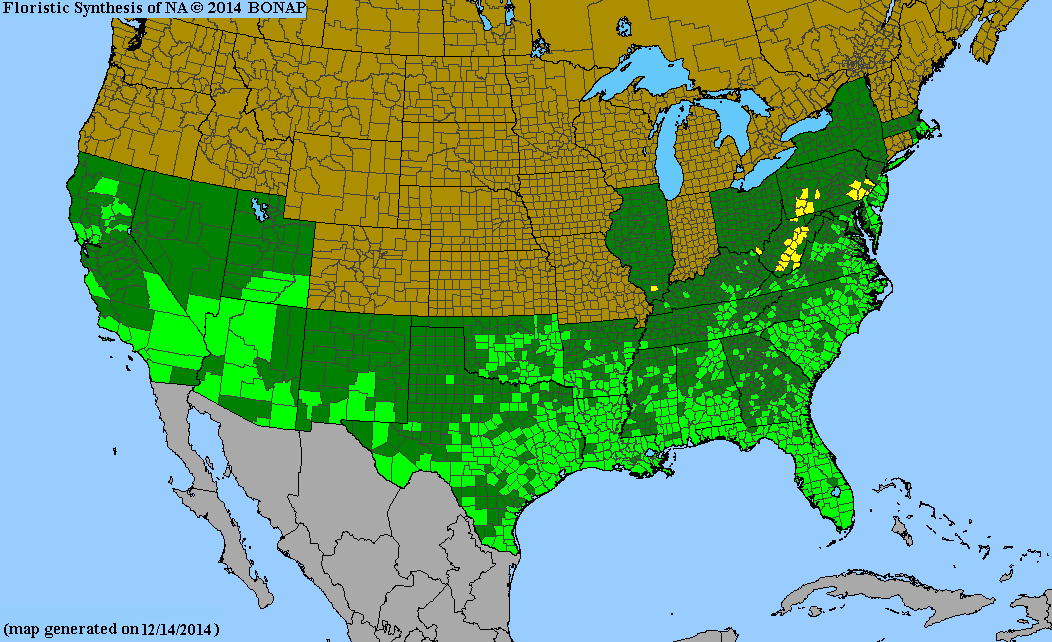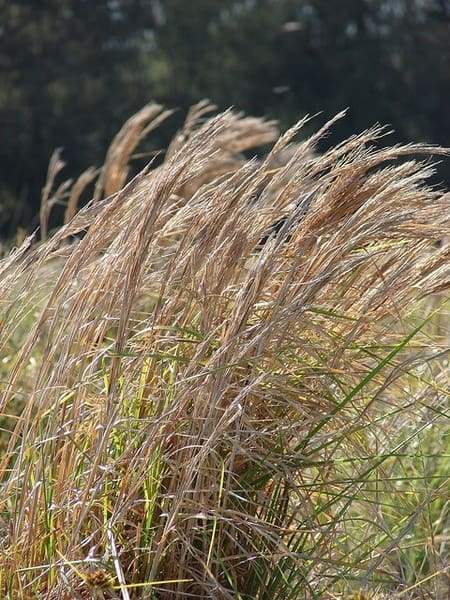Poaceae
bushy bluestem
Andropogon glomeratus
Synonyms
Anatherum macrourum
Anatherum virginicum subvar. glomeratus
Andropogon macrourus
Andropogon macrourus var. genuinus
Cinna glomerata
Sorghum glomeratum
Other Common Names
brushy bluestem
Plant Type
Grass/Grass-like
Life Cycle
Perennial
Typical Size
2-6 ft. tall
2-3 ft. wide
Tolerant of
Occasional Flooding, Salt Exposure
Inolerant of
Dry Soil
Propagation
By seed, By division
Plant Propagation Notes
Divisions should be made during winter dormancy.
Plant Planting Notes
If started in pots, be aware of becoming root bound as root systems grow quickly. Can self-seed aggressively.
Plants/Diseases
No serious insect or disease problems.
Wildlife Benefits
Host plant for butterfly larvae, Fruit/seeds for birds
Leaves
Long narrow leaves, 3/8 inch wide, are green with a red tint in summer becoming copper in fall.
Flowers
White to pink beard-like flowers bloom from September to October.
Toxicity
no known toxicity.

USDA Hardiness Zones
7, 8, 9
Light Exposure
Full Sun
Soil Moisture
Moist
Soil Drainage
Poorly Drained
Native in South Carolina?
Yes
Plant Native Habitat
Swamps, wet savannas, pine flatwoods, bogs, fens, depression ponds, interdune swales and ponds, wet disturbed sites.
Global Conservation Status (NatureServe)
Secure (G5)
Federal Conservation Status (USFWS)
Not Listed
Distribution Notes
Common throughout South Carolina
Subspecies
Andropogon glomeratus hybridizes with both A. longiberbis (not native to SC) and A. virginicus (native to SC). Some of its varieties are morphologically similar to the latter species.

